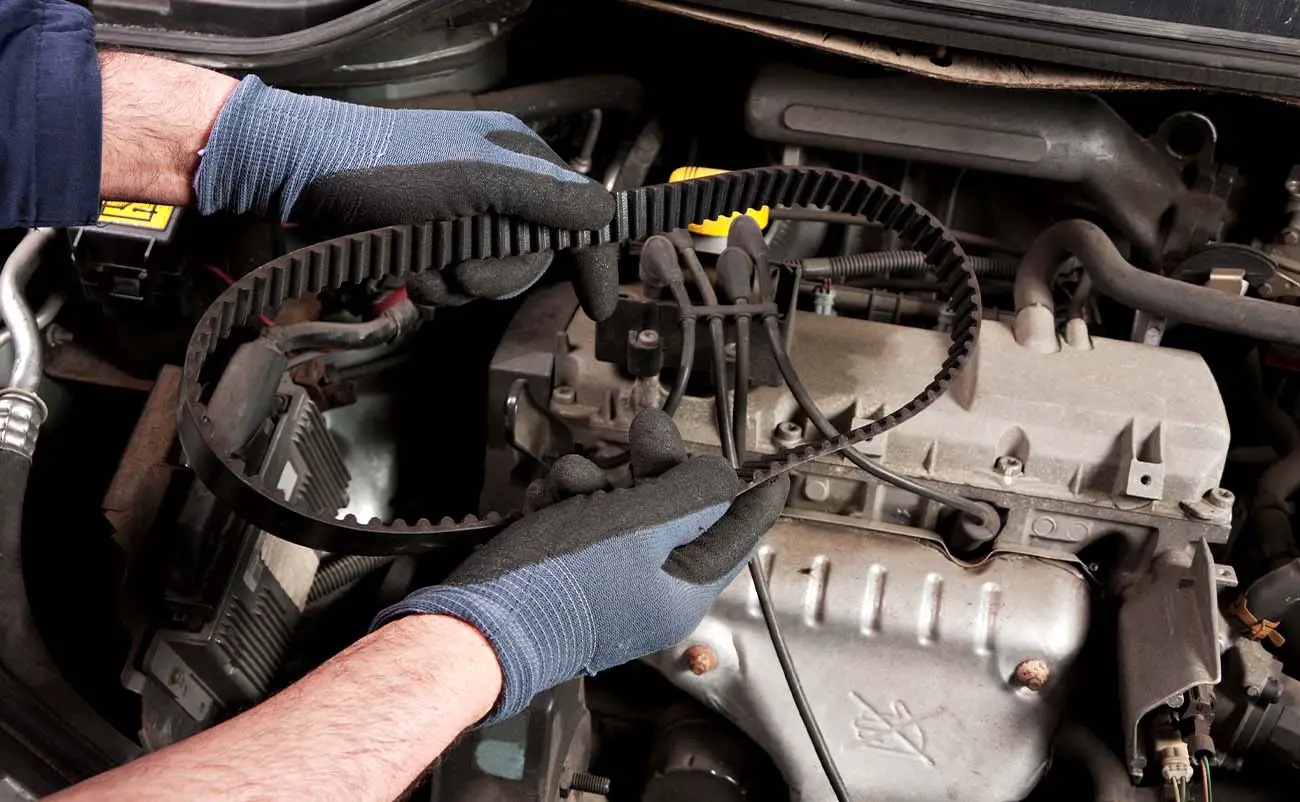Has your mechanic told you that your vehicle needs a new timing belt? Did the high price of the repair scare you off and cause you just to put off that service until something bad happens? Timing belt replacement must be done when the time comes, as delaying it can have major consequences on your car’s engine. We are here to help you understand exactly what your car’s timing belt does as well as how much it should cost you to get it replaced. Keep reading, and we will give you all the details you need to know about this maintenance item.
Table of Contents
Average Timing Belt Replacement Cost
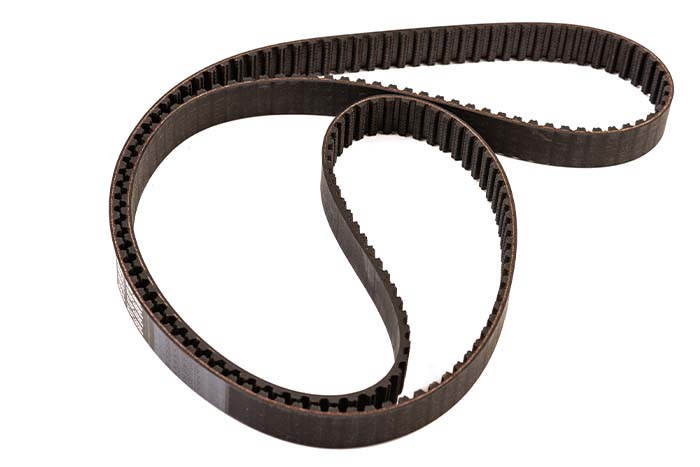 The cost to replace a timing belt varies based on your specific vehicle, but the average price is generally about $700. While a timing belt kit, which includes all the necessary parts, might only cost $300 or less, there is quite a bit of labor cost involved in a timing belt replacement job. Some vehicles, like a Honda or Toyota, have timing belts that can be challenging to access, and this requires additional labor time, thus higher labor costs.
The cost to replace a timing belt varies based on your specific vehicle, but the average price is generally about $700. While a timing belt kit, which includes all the necessary parts, might only cost $300 or less, there is quite a bit of labor cost involved in a timing belt replacement job. Some vehicles, like a Honda or Toyota, have timing belts that can be challenging to access, and this requires additional labor time, thus higher labor costs.
If you take your vehicle to your local dealership, then the repair cost might be even higher. You will likely have a bill of around $1,000 in most cases. Most of the time, an independent auto repair shop is going to be cheaper. In addition, most repair shops recommend replacing your water pump at the same time. Since the water pump and timing belt are generally located close to each other, you can save hundreds of dollars on labor by swapping the water pump while inside the engine.
How Does A Timing Belt Work?
If you look under the hood, you won’t see your timing belt. The belt you see there is called a serpentine belt, and we will discuss that more in the next section. So, what is a timing belt? Your timing belt is located more internally to your engine, and it will be protected by a timing belt cover of some kind. The timing belt is responsible for keeping all the internal parts of your engine working together in sync. It ensures that your camshaft and crankshaft are spinning together so that the valves open and close at the right time and the pistons move properly in the cylinders.
The timing belt is connected to both the crankshaft and camshaft by pulleys attached to each one. Unlike standard pulleys that are somewhat smooth on the surface, these pulleys have notches like gears. The timing belt has teeth on the underside, and these teeth fit into those notches. This helps prevent slipping of the belt and ensures that the parts move together as the belt turns. There is also a timing belt tensioner attached that makes sure the belt remains tight.
Some newer vehicles use timing chains instead of timing belts. These chains are more durable and less likely to break during regular operation. They require less maintenance and do not need to be changed as frequently as the more traditional timing belts. Larger engines like a V-8 will even have two timing belts or chains, one running to each camshaft.
Timing Belt VS. Serpentine Belt — What’s The Difference?
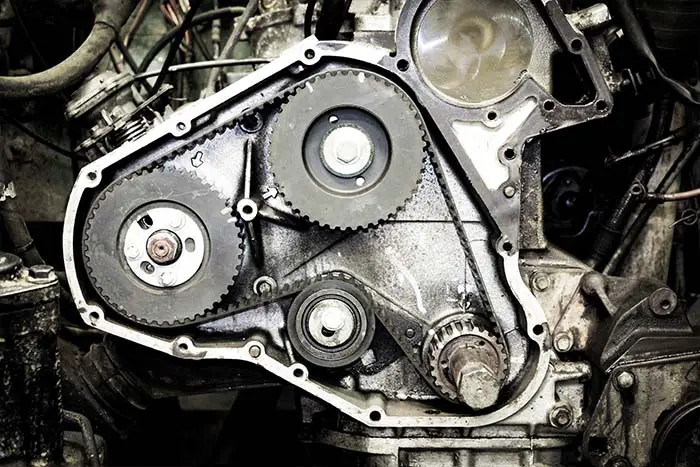
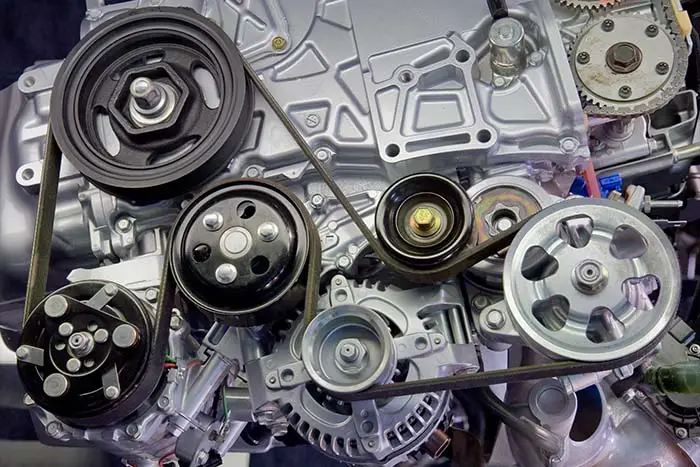
As previously mentioned, the belt that you see under the hood is your serpentine belt. You might also hear it referred to as the accessory drive belt. This is the belt that powers all the accessories on your engine like your air conditioner compressor, alternator, power steering pump, and external water pump. You will also typically find an idler pulley or tensioner on this belt to keep it tight as well.
The serpentine belt is attached to a pulley on the crankshaft, and it is routed around pulleys on all your engine accessories. As the engine runs, the crankshaft spins and rotates this belt. This causes all your car’s accessories to turn and stay powered as well. If this belt breaks, it can have serious consequences as well. For instance, your water pump would no longer spin, so your cooling system would not operate properly. Your car would quickly overheat. In addition, if the alternator quits spinning, then your battery will drain quickly, and your vehicle will lose power to the electrical system. While a serpentine belt failure might not cause significant damage like a broken timing belt, it will still prevent your car from running.
Lousy Timing Belt Warning Signs
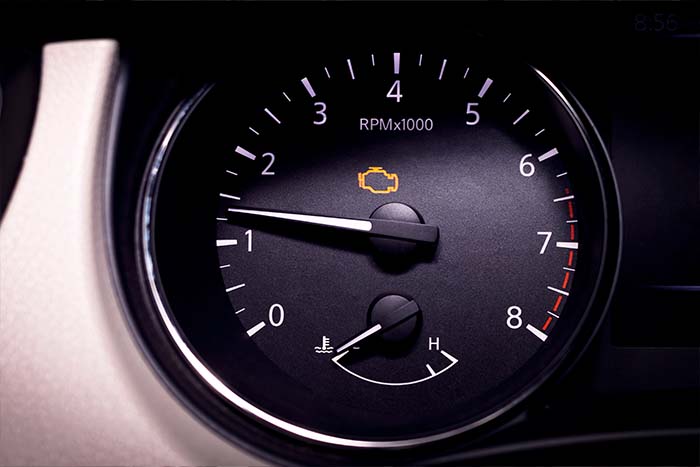 While timing belts should generally be replaced as part of routine car maintenance, there are situations where you might start to see some symptoms of a bad timing belt. If you notice any of these warning signs, do not ignore them! It could have dire consequences for your engine.
While timing belts should generally be replaced as part of routine car maintenance, there are situations where you might start to see some symptoms of a bad timing belt. If you notice any of these warning signs, do not ignore them! It could have dire consequences for your engine.
— Rough Idling
As your timing belt gets old, some of the teeth might begin to break off. This can cause the belt to slip and the camshaft timing to be out of sync. This can lead to engine misfires and rough idling. If the valves and pistons are not operating in perfect harmony, then you will notice that your car starts to shake and feel very rough when idling. It would be best if you had an automotive repair shop check things out right away.
— Poor Acceleration Or Engine Performance
Similar to the symptom above, a loose or damaged timing belt will cause poor engine performance. If your engine is misfiring, then it will likely stumble and skip as you attempt to accelerate. If it becomes bad enough, your engine might even stop running as you accelerate. This can be a dangerous situation that you should get corrected immediately. In some cases, you might find that your car won’t even start.
— Broken Valves Or Pistons
As the timing belt slips, the valves and pistons may become out of sync. If they are not operating correctly, these two parts can slam into each other in the cylinder head’s combustion chamber. When this happens, it can cause catastrophic engine damage. Broken valves or pistons are almost always a sign of a failed timing belt.
— Low Oil Pressure
A failing or damaged timing belt can also have a negative effect on your oil pressure. As your timing belt slips or misses teeth on the pulley gears, it can prevent your oil pump from spinning correctly. When this happens, the oil pressure in your engine can drop. This can lead to engine damage, so if you notice that your oil pressure is low or declining, then shut off your engine immediately until the issue can be resolved.
How Often To Replace Your Timing Belt
Timing belts are meant to last for quite a while. Most vehicle manufacturers recommend changing your timing belt every 75,000 to 100,000 miles. It would be best to refer to your owner’s manual for the specific maintenance interval for your vehicle. Timing chains, on the other hand, generally do not require changing as a preventative measure. Most water pumps also fail around this mileage, so that is another reason it is a good idea to go ahead and change the water pump while performing the timing belt job.
While many people want to ignore this repair since it is quite expensive, it should be part of your regular maintenance routine. Even though it is not performed often, it should never be overlooked. If your timing belt breaks, it can cause catastrophic damage inside your engine. A broken timing belt can lead to broken pistons, valves, and even a cracked engine block. Failure to keep your belt in good working condition might lead to thousands of dollars in repairs and even a new engine.
Performing Timing Belt Replacement Yourself
Since the timing belt cost itself is relatively low, many people choose to DIY this repair to save several hundred dollars on labor. You should know that this is not an easy job, and you must perform the work exactly the right way, or you will damage your engine. Many people think that since this is preventative maintenance, the job should be easy, but that is not the case!
If you decide to tackle this job yourself, you will need a few specialized tools. First, you will need a pulley puller to remove the crankshaft pulley. You should first remove the serpentine belt and all accessory belts. Next, you can remove the timing belt cover to access the timing belt. Make sure that the timing marks on the crankshaft and camshaft are visible. Otherwise, you will need to make your marks to ensure that they are appropriately aligned during reinstallation.
Remove the timing belt. If you notice any leaking coolant, then go ahead and replace the water pump as well. Next, align the timing marks on the crankshaft and camshaft as you reinstall the new timing belt. Replace the timing belt cover, crankshaft pulley, and all accessory belts. The steps are relatively straightforward, but remember that this is a complex and time-consuming job. Do not attempt it unless you have some mechanical experience.
The Bottom Line
Though not performed as often as oil changes, a timing belt change is a maintenance item that you should not forget. Though their lifespan is usually almost 100,000 miles, a timing belt problem can lead to hefty repair bills for your vehicle. If you take your car to a shop, you can expect to pay around $700 to $1,000 for a timing belt replacement in most cases. Doing the job yourself can save you some money. You can generally purchase the parts for $200 to $300, but it is a tough job that most people cannot tackle on their own.
Frequently Asked Questions
What are the risks of not replacing a timing belt?
The most significant risk is having your timing belt break while you are driving your car. If this happens, it can lead to broken pistons, valves, and other internal engine components. This can destroy your engine and lead to an expensive repair bill. It would be best if you did not put off replacing an old timing belt.
Is it worth fixing a timing belt?
It depends on whether your timing belt has broken already. If you need to replace your timing belt, then it is usually worth it. Failure to replace it in time can lead to a broken belt and a damaged engine. However, if the belt has already broken, it may have caused engine damage as well. If your car is not worth much, it might not be worth spending the money to make all the associated repairs.
Can I drive my car with a bad timing belt?
No, it would be best if you never drove with a bad timing belt. Not only could your car engine stall or shut off due to bad timing, but it can also cause internal components to collide and damage themselves. If this happens, you will likely need to pay thousands more in parts and repairs on top of replacing a bad timing belt.

